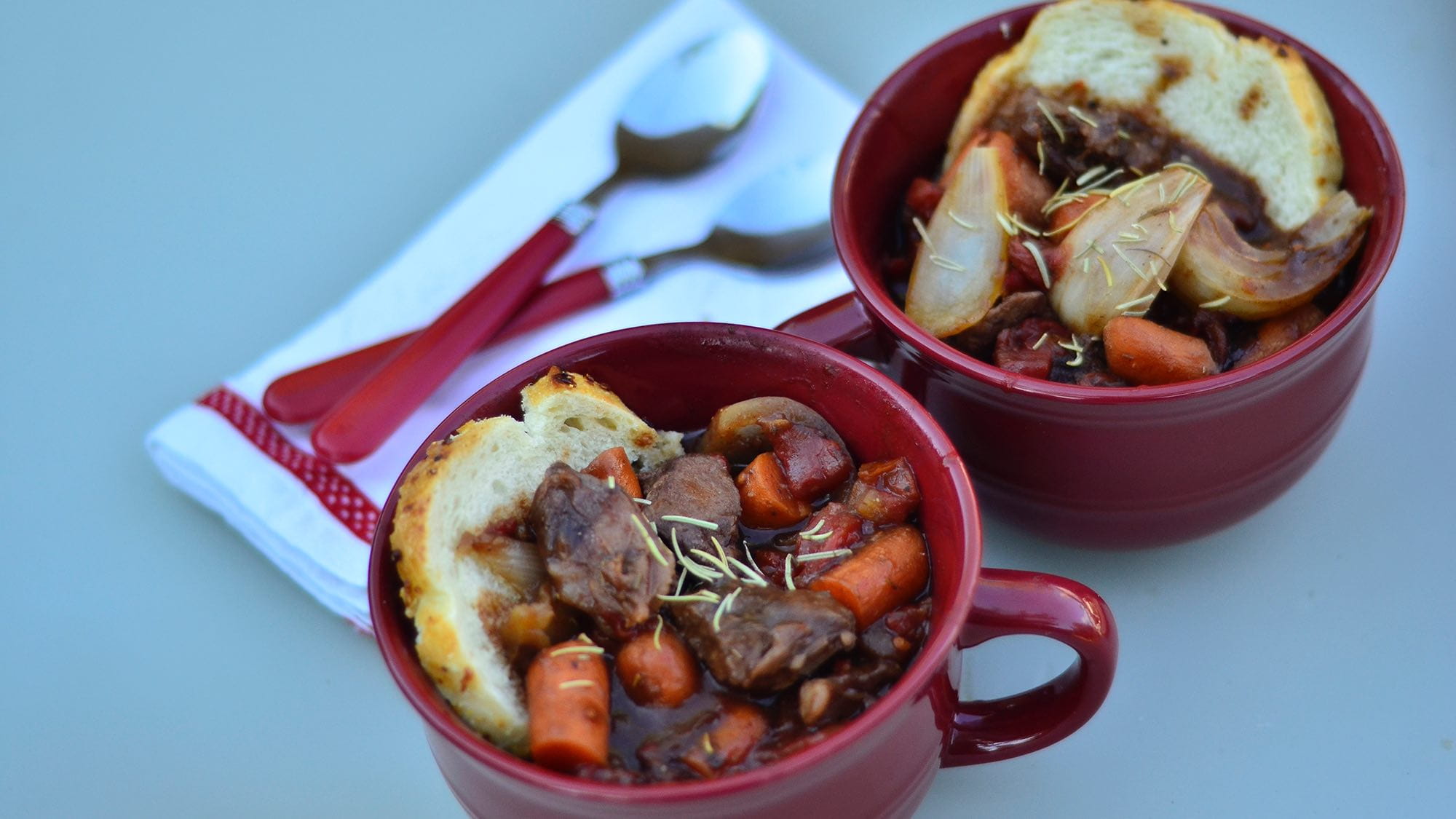The middle slice of lasagna is always the gooiest representation of the dish – more photogenic and more highly prized, since it’s protected on all sides and often has the best balance of fillings. But we all know where the real action is: the crispy edges, where the cheese has a satisfying crunch. For those edge-loving lasagna eaters, there’s a simple way to get that sought after crispiness on the sides, top, and bottom of every bite: Make an inside-out lasagna cake.
This lasagna cake sprung from one of my irritating personality traits: I dislike large quantities of tomato sauce. More accurately, I enjoy a perfect balance of sauce to noodle, erring on the side of less sauce. The more naked noodles on the edges that end up toasted and chewy, the better. It’s the same frame of mind that celebrates spaghetti pie, or tahdig; those crispy starches always get me, and this dish is built with that preference in mind. The inside-out lasagna is built in a circular cake pan with the noodles primarily on the outside and the filling tucked away on the inside, so each bite has the perfect balance of filling and crunchy top. There is a sauce, of course, but it’s a thick meat sauce. The jarred sauce it calls for is cooked to evaporate excess tomato water. The result is a toasted, cheesy, meaty, layered centerpiece encased in a semi-fried, super crisp noodle shell.
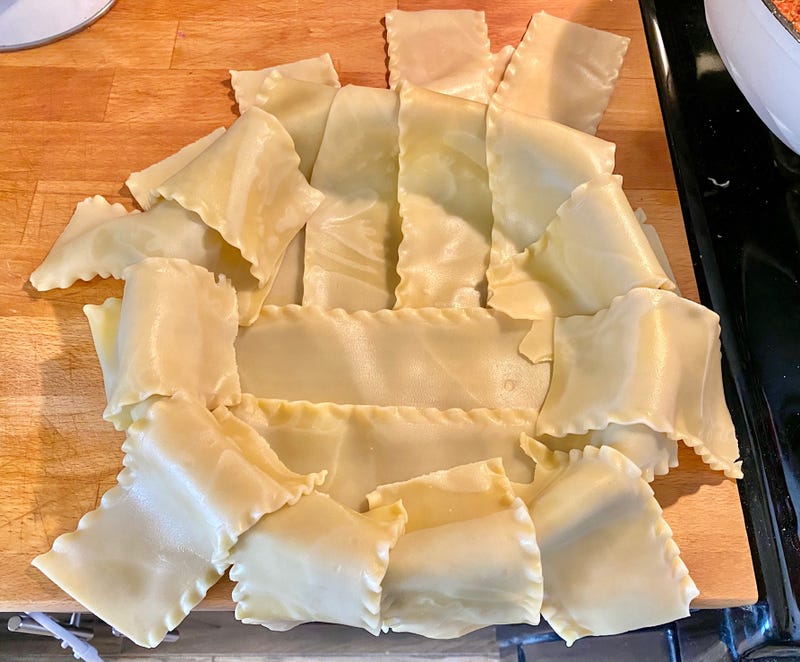
Photo: Allie Chanthorn Reinmann
As when making any lasagna, you must ready the components before you start layering. The elements include a meat sauce, the cheese section, and the noodles. Boil about 10–15 lasagna noodles until soft and pliable. In a small bowl, mix about a cup and a half of ricotta cheese with an egg and seasonings you enjoy. (I used a bit of garlic powder, basil and oregano in mine.) Cook the meat sauce you’re using over medium heat in a wide bottomed skillet to evaporate as much excess water as you can. I used Rao’s bolognese sauce with added ground turkey and onion, cooked for about 10 minutes, or until there was no longer any liquid pooling up and the mixture was quite thick. I ended up with about two cups of reduced meat sauce.
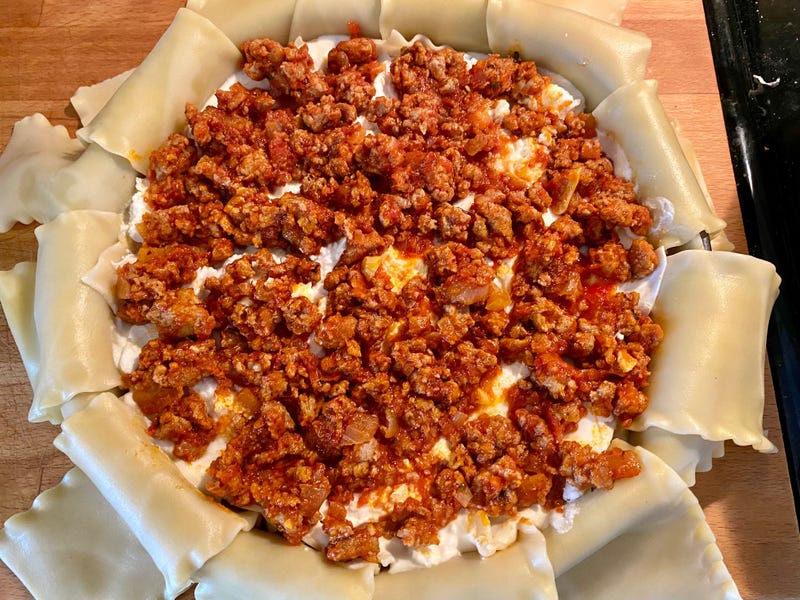
Photo: Allie Chanthorn Reinmann
It’s the assembly that’s a bit different. I used a 9-inch round cake pan and prepared it the same way that I prepare cakes, by buttering the entire inside and putting a parchment circle in the bottom, as I planned on flipping it out and serving it upside down. However, you could build it in a cast iron skillet and serve it straight out of there. (No need to line it with parchment, and you’ll probably get crispier sides.) Line the bottom with pasta noodles and overlap them slightly to create a pasta bucket. The excess noodle should climb up the sides and drape over the wall. If there are areas that don’t have draping noodles, tear noodles in half and place them along the walls so they radiate outward like a cartoon drawing of the sun. This will also ensure more coverage, and they’ll be folded over later. As I was planning for the bottom to eventually be the top, I did a little decorative pattern, but this isn’t necessary, especially if you aren’t going to flip it.
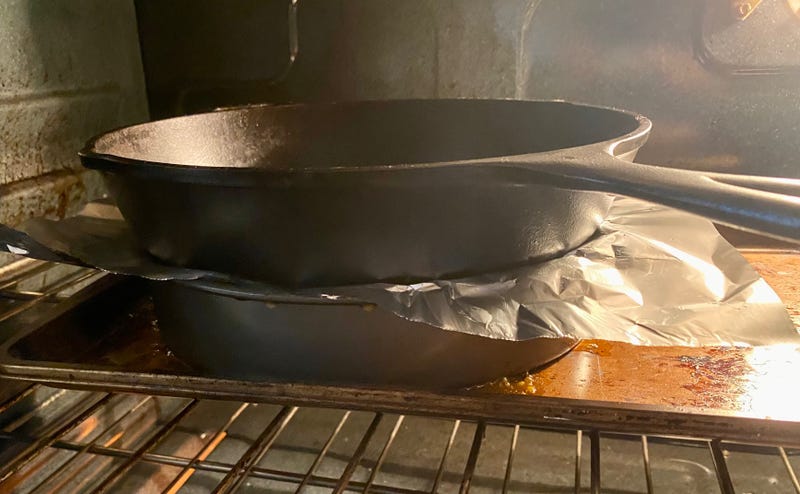
Image: Allie Chanthorn Reinmann
Put a thin layer of the ricotta mixture on the bottom, followed by some hunks of mozzarella. Smear half of the meat mixture on top, then lay down a layer of pasta noodles. For this layer you do not want any excess draping over, so just rip and angle the pieces to make one layer. Repeat with the other half of the ricotta mixture, mozzarella, and meat sauce. Fold the draped pasta “tails” over the top of the cake so they overlap at a natural angle and there are no bald spots. If a number of noodles start overlapping in the same spot, spray or brush some olive oil in between the layers; the oil will allow those noodles to fry slightly and get crispy. Once you’re finished wrapping the top, spray the entire top surface of the noodles with olive oil. Cover with a lightly buttered piece of foil and top with another cake pan or another cast iron skillet to weigh it down. Bake at 350°F for 20–25 minutes, or until bubbling. Remove the weight and the foil and broil for five minutes.
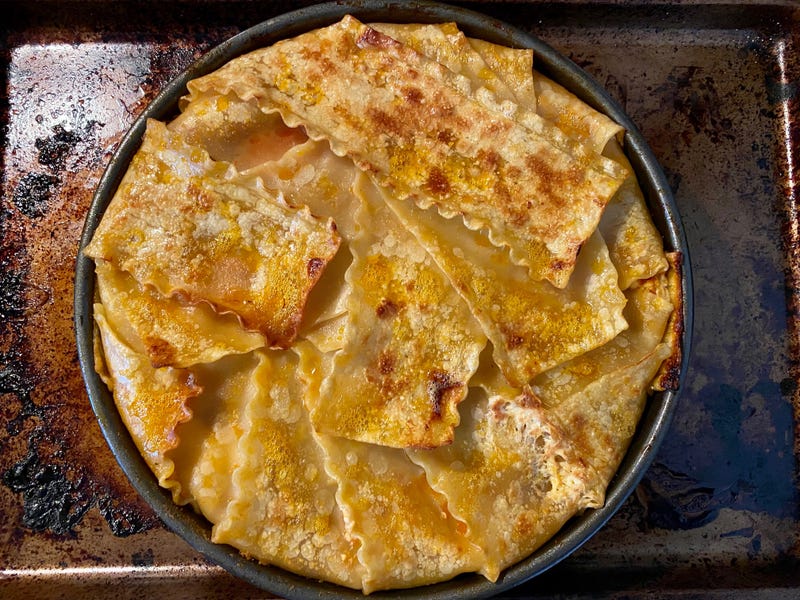
Photo: Allie Chanthorn Reinmann
The lasagna cake should be bubbly and topped with delicious, semi-fried, crunchy noodles. If you see yourself as a sucker for luxurious toppings or you like the contrast of fried noodles and runny cheese, top the cake with a couple spoonfuls of sauce and a load of meltable mozzarella before the broil. Note that in this case you won’t be flipping it out of the dish, but so much the easier for you.
If you didn’t put on a topping, cool it for 20 minutes and flip it out of the cake pan onto a dish. If you want the crispy, broiled side up, flip it over again onto another plate. Top with grated parmesan cheese and slice it like a cake. (This might be the kind of cake I ask for on my next birthday.) Leftovers keep in the fridge for up to five days.
Inside-out Lasagna Cake
Ingredients:
- 2 cups of meat sauce (reduced, to evaporate excess water)
- 10 ounces of ricotta cheese
- 1 egg
- Garlic powder, oregano, salt, basil, or other seasonings to taste
- 10 ounces fresh mozzarella cheese
- 12-14 lasagna noodles, boiled
- Olive oil for brushing, or spraying
Preheat the oven to 350°F. Line a cake pan with butter and a parchment circle at the bottom. If using a cast iron skillet, coat the skillet with butter.
Mix the ricotta cheese with the egg and seasonings. Line the cake pan (or cast iron skillet) with sheets of pasta so they drape over the edges, radiating outward, overlapping the noodles slightly, and tearing sheets in half to cover open spaces.
Spread half of the ricotta mixture into the bottom and top with half of the mozzarella cheese. Spread half of the meat mixture on the cheese layer, and top with a layer of noodles. Fit this layer of noodles exactly into the pan, they should not drape over the edges. Cover with the other half of the ricotta mixture, and repeat the mozzarella, and sauce layers. Taking the draped piece, flip them over so they encase the top of the lasagna cake. Any layers that overlap can be sprayed or brushed with oil to allow them to get crunchy. After the cake is wrapped on the top, spray with a light coating of oil. Cover the cake with a lightly buttered piece of foil and place an empty cake pan or cast iron skillet on top to weigh it down.
Bake at 350°F for 20–25 minutes. Remove the weight and the foil and broil for another five minutes. Let the cake cool for 20 minutes and flip out of the pan or serve straight out of the skillet.
This article was written by Allie Chanthorn Reinmann from Lifehacker and was legally licensed through the Industry Dive Content Marketplace. Please direct all licensing questions to legal@industrydive.com.



